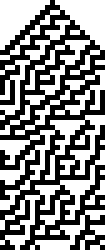Structured 1D CA Music

Fig. 1 - Rule 90 used to drive bass
Previously I have shown that elementary cellular automata can be used to make a bit of abstract electronic "music". Unfortunately the methods that I employed at that time failed to produce something that sounds like more conventional music. I decided that constraining the automata to a set series of key changes and variable time durations for each note that I could result in something with a more conventional sound. I finally decided that constraining the music to the rules of the 12 bar blues progression would be an appropriate method of going about this.

Fig. 2 - Rule 30 used to drive treble
I decided to use the C major progression, for simplicity's sake, and to vary the time durations of each note by arpegiating each measure and setting each measure's duration to one second. I chose to use Wolfram's Rule 90 as the driving force behind the bass (Fig. 1) and Wolfram's Rule 30 to drive the treble (Fig. 2). Rule 90 was chosen due to it's repeating fractal nature and Rule 30 was chosen due to it's chaotic nature.
The resulting musical piece hardly resembles what most imagine when they think of the blues but it definitely fulfills the chord progression constraints consistent with 12 bar blues. A possible future direction would be to use other elementary cellular automata rules to drive music creation or to even extend into 2D cellular automata using the extra dimension to differentiate different instruments.